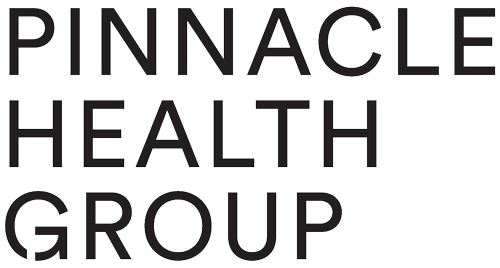Introduction, background & context
What do you do for work? Do you sit down at a desk all day? How often do you move? Have you or are you experiencing neck pain and/or headaches?
If you have experienced headaches or neck pain in the past, this series is perfect for you and hopefully give you a bit of context to your personal experience with this recalcitrant condition.
It’s important to read this because neck pain and headache can and will:
Decrease quality of life
Decrease work productivity
Increase stress and have an impact on your personal and professional relationships
This blog series aims to provide a background for the different types of ‘headaches’, address some possible causes and what you can do to achieve:
A pain-free and ‘well’ lifestyle
Maximise your quality of life
Maximise productivity and quality of interpersonal relationships
Reduce stress
Prevalence And Types Of Headaches
Headaches, migraines, dizziness, head throb, sore head, tension-type headaches… Chances are, if you have had any of these experiences, you are not alone. Up to 7 million people in Australia (42% for women and 36% for men) have suffered or are suffering from tension-type headaches, up to 3 million people (10-15% population) have suffered from migraine and the direct and indirect costs of migraine alone would be around $1 billion per annum (HeadacheAustralia.org).
We tend to throw around the terms migraine and headache interchangeably. Are there any differences between them and what types of other ‘headaches’ are there?
In simple terms, I have broken them down into 3 umbrella categories for you.
- Cervicogenic headaches (CGH) – Most common
- Migraine
- Tension-type headaches (TTH)

Cervicogenic Headaches
Cervicogenic headaches (CGH) is a syndrome characterised by acute or chronic hemi-cranial (one side of the head) that is referred to the head from either bony structures or soft tissues of the neck (Biondi, 2005).
We often find patterns with CGH clients:
Localised to one side of the head
Restricted neck movements
Pain triggered by movement or sustained awkward postures
Same side neck, shoulder and/or arm pain
What can you do?
Your next posture is the best posture – change it up, sit to stand to sit desk
Stretching – moving your neck by looking up, down and rotating to the side a couple of times every hour
Strengthening
Fortunately, physiotherapy treatment such as joint mobilisation, manipulation and exercise therapy has shown excellent efficacy and outcome with CGH (Racicki et. Al. 2013). These types of headache typically resolve around 2-3 months of successful treatment.
Migraines
Migraines are a type of reversible neurological deficit with alternating one-sided head throbbing and/or pulsating sensation, which can be accompanied by paraesthesia (numbness). It can last anywhere from 10 minutes to 72 hours.
Characteristics:
Unique triggers such as smell, stress, food, light, physical activity and/or sound.
Possible psychosocial factor influences such as stress, depression, anxiety, burnout, family issues etc.
Associated with sleep deprivation, skipping meals, weather changes and genetics.
As you can see, the underlying causes of migraines are so multi-factorial. Therefore, it is imperative to consider not only the physical aspect of a migraine sufferer, but the psychological and social aspect also.

Tension-Type Headaches
Tension-type headaches are a primary form of headache; unlike Cervicogenic headache, which is secondary to structural referral pain from the neck. Tension-type headaches stem from the central or peripheral nervous system (Bendtsen, 2000).
Characteristics:
Affects both sides of the head
Tight/pressing – mild to moderate
NOT aggravated by routine physical activity
Duration: 30 minutes – 7 days
Factors:
Stress
Exercise and lifestyle changes
Physiotherapy – Deep muscle training
With Tension-type headaches, an underlying cause of deep muscle impairment is often present. A study conducted in the Netherlands investigated the efficacy in physiotherapy deep muscle retraining, and found that the treatment has reduced headache frequency, intensity and duration (Ettekoven & Lucas, 2006).
Chin Tuck Exercise
This simple exercise to tuck your chin, making a double chin, can be performed easily from your desk. It aims to train the deeper stabilising muscles in your upper neck, improving its endurance and decreasing the chances of being fatigued.
If you’re sick of neck pain and/or headaches and you want to live pain free and improve productivity and reduce stress, book a session with our Physiotherapists. Here at Pinnacle Health Group, we have experienced Physiotherapists, Psychologists, Massage Therapists, Myotherapists, and Dietitians working together to help you reach your wellness goals.
References
- Bendtsen, L. (2000). Central sensitization in tension-type headache – possible pathophysiological mechanisms. Department of Neurology. 20(5):486-508. Retrieved from http://journals.sagepub.com.ez.library.latrobe.edu.au/doi/abs/10.1046/j.1468-2982.2000.00070.x#articleCitationDownloadContainer
- Biondi, D. M. (2005). Cervicogenic Headache: A review of Diagnostic and Treatment Strategies. The Journal of the American Osteopathic Association. 105(S16-22). Retrieved from http://jaoa.org/article.aspx?articleid=2093083
- Ettekoven, H. V. & Lucas, C. (2006). Efficacy of Physiotherapy including a craniocervical training programme for Tension-Type headache; A randomized clinical trial. International headache society. 26(8):983-991. Retrieved from http://journals.sagepub.com.ez.library.latrobe.edu.au/doi/abs/10.1111/j.1468-2982.2006.01163.x#articleCitationDownloadContainer
- Prevalence and cost of headache in Australia. (2018). Headache Australia. Retrieved from http://headacheaustralia.org.au
- Racocki, S., Gerwin, S., DiClaudio, S., Reinmann, S. & Donaldson, M. (2013). Conservative physical therapy management for the treatment of cervicogenic headache: a systematic review. Journal of manual & manipulative therapy. 21(2):113-124. Retrieved from https://www.tandfonline.com/doi/abs/10.1179/2042618612Y.0000000025
